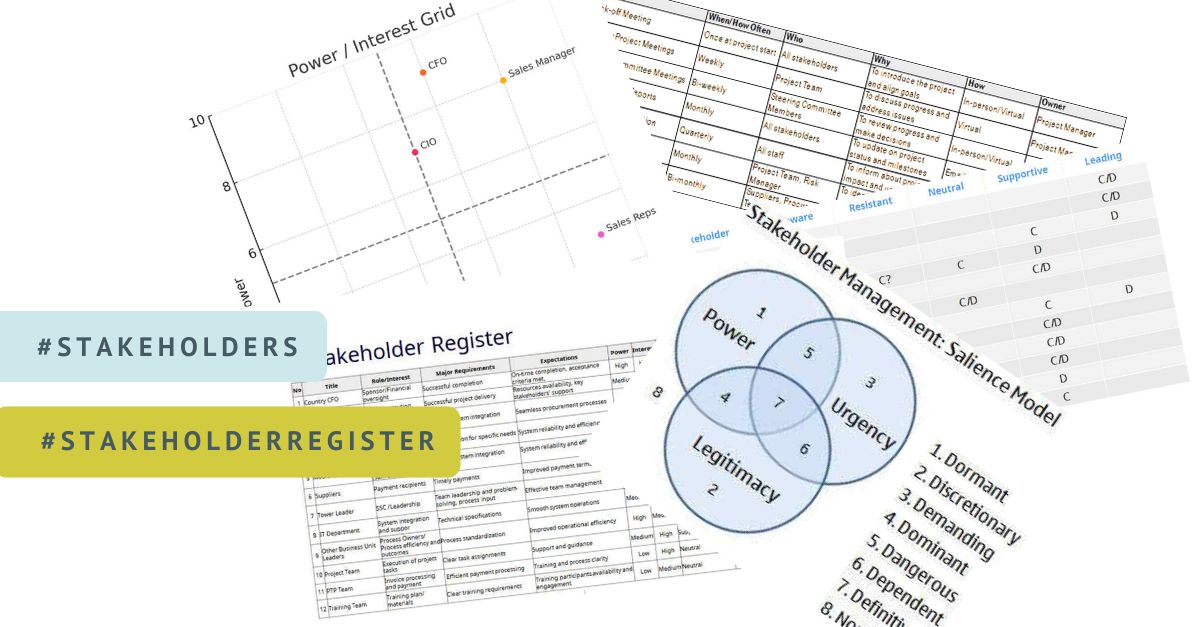
Stakeholders – from Shadowy Figures to Strategic Partners
Projects don’t happen in a vacuum. Behind every Gantt chart, Kanban board, or agile burndown lies a crew of individuals who can influence—or torpedo—your initiative. The Project Management Body of Knowledge (PMBOK®) calls them stakeholders, and mastering stakeholder engagement is what separates the chaotic “project mess” from smooth, value-delivering execution.
Let’s walk through the stakeholder engagement processes using a practical examples.
Who Are These People Anyway? Stakeholder Definition
According to PMBOK®, a stakeholder is:
“an individual, group, or organization that may affect, be affected by, or perceive itself to be affected by a decision, activity, or outcome of a project.”
In other words: anyone who has skin in the game – whether they like it or not.
This group can include internal actors like the project sponsor, project manager, core team members, department heads, or IT support. It also encompasses external parties such as suppliers, customers, consultants, and regulators. Even the occasionally overlooked roles—legal, finance, cybersecurity, HR—can have significant influence. Their expectations and reactions must be anticipated and managed.
In implementing CRM system example, stakeholders might include:
- Project Sponsor,
- Project,
- Sales department (daily users),
- IT department (system maintenance and data security),
- CFO (funding and return on investment),
- Marketing (desiring campaign integration),
- Customers (impacted via service enhancements).
Step One: Identify – Stakeholder Register
The stakeholder register is the foundational tool for organizing this landscape. It captures key information such as:
- Name, role, and organizational position,
- Level of interest and influence,
- Preferred communication channels,
- Current and expected engagement levels.
Example of updated Stakeholder Register for payment improvement process
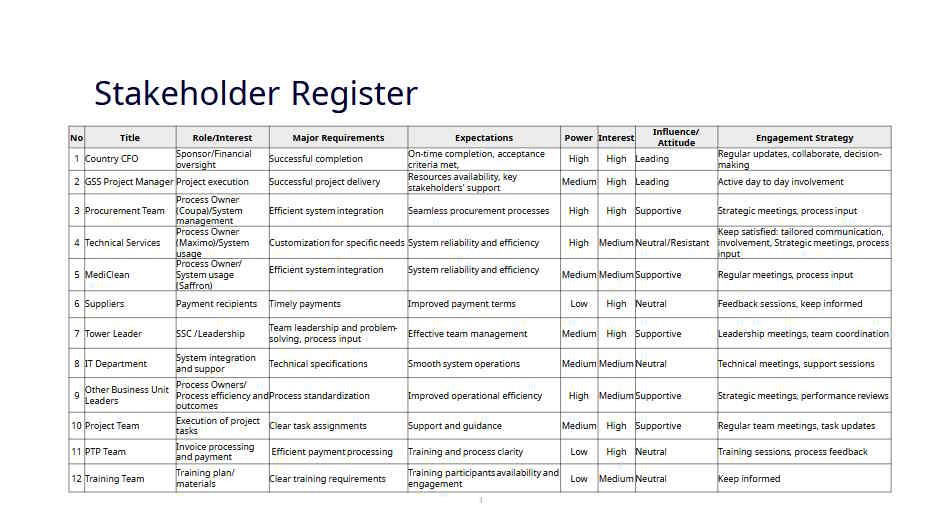
This tool evolves with the project. Stakeholders’ roles may change. New ones may emerge. A dynamic register ensures your strategy stays current.
Step Two: Analyse – Tools and Techniques
Once identified, stakeholders must be analysed. The aim is to anticipate behaviors, predict concerns, and position communications effectively.
Three essential tools include:
Power/Interest Grid
Plots stakeholders across four quadrants based on influence and interest. It helps tailor your approach—for example, keeping high-power, high-interest stakeholders closely managed and involved.
Example of Power/Interest Grid for CRM project
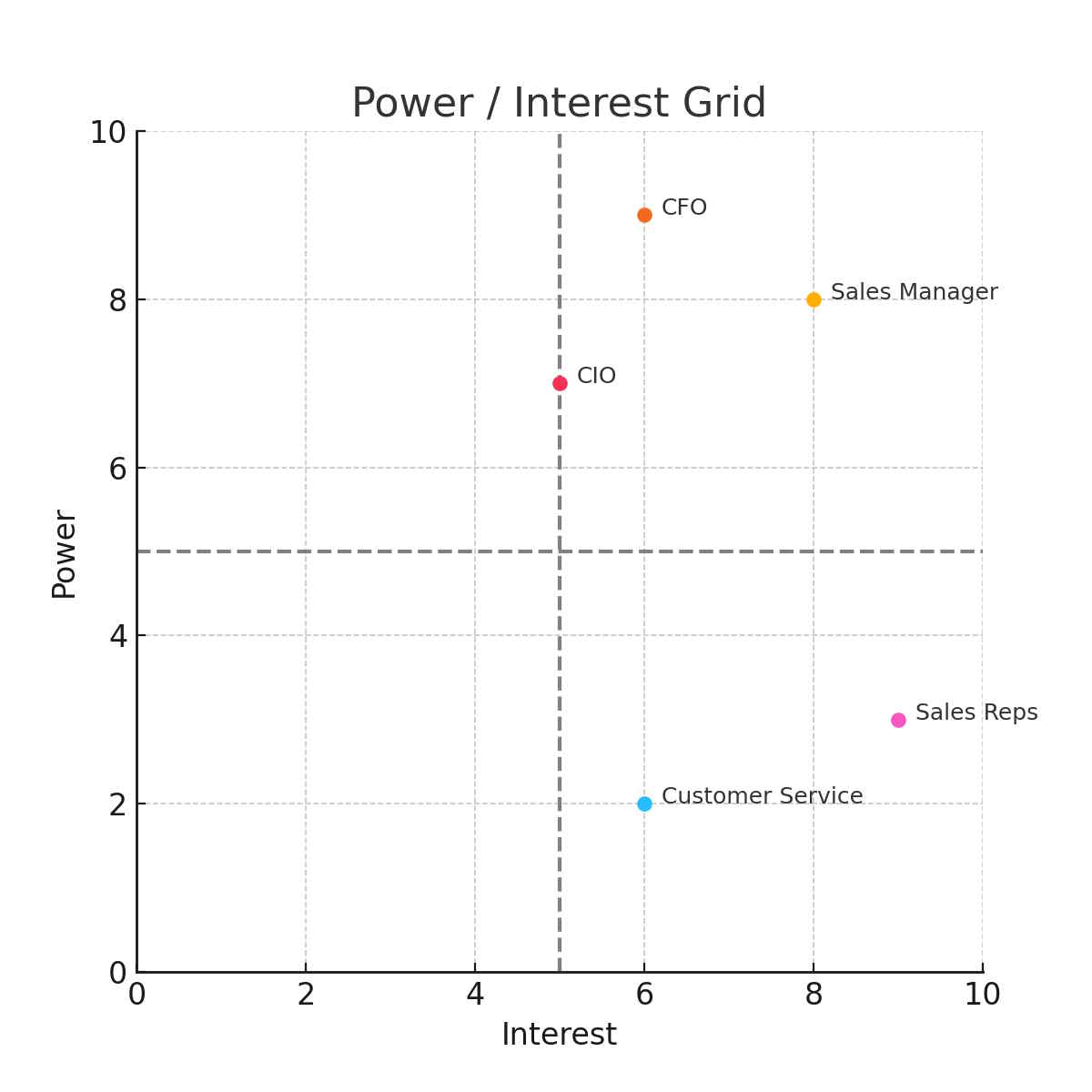
Stakeholder Cube
Adds complexity by factoring in attitude and engagement level. It’s especially useful when dealing with large stakeholder groups with varying levels of enthusiasm or resistance.
Salience Model
Evaluates power, legitimacy, and urgency. Stakeholders scoring high in all three demand immediate attention and careful handling.
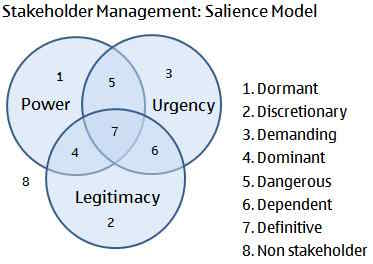
Step Three: Engage – From Awareness to Advocacy
PMBOK emphasizes stakeholder engagement over passive communication. It’s about building real relationships, not just sending updates. Two core tools drive this:
Stakeholder Engagement Assessment Matrix
This tool compares current versus desired engagement. It allows the team to plan interventions that shift a stakeholder from, say, resistant to supportive.
Engagement Levels by PMBOK:
- Unaware – does not know about the project.
- Resistant – opposed to the project or its outcomes.
- Neutral – aware but indifferent.
- Supportive – agrees with the goals and supports the work.
- Leading – champions the project and motivates others.
Example of Stakeholder Engagement Assessment Matrix for payment improvement process

Communications Management Plan
Communication is not “one-size-fits-all.” Tailoring the format, frequency, and content of messages ensures relevance and engagement. The CFO wants performance metrics; the sales team wants usability and time savings.
Example of Communications Management Plan for payment process improvement
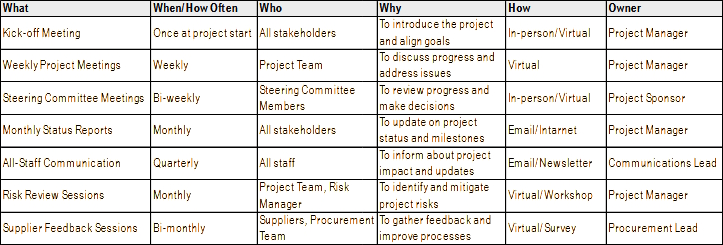
Step Four: Monitor and Adapt
Projects are dynamic, and so are stakeholders. New executives may join, priorities shift, crises arise. That’s why stakeholder engagement must be continually monitored and adapted. Feedback loops, periodic reassessments, and transparency all play a vital role.
Build a Network, Not Just a Plan
Stakeholders aren’t just checkboxes – they’re the people who ultimately make or break your project. By identifying, analyzing, and engaging them effectively, you transform risk into opportunity and resistance into collaboration.
Mastering stakeholder engagement means you’re not just delivering a project – you’re creating lasting impact through strategic relationships.

Sign up for our newsletter. Each week you will receive a letter from us with articles worth reading, tools for working with teams, tips and interesting facts about project management.


